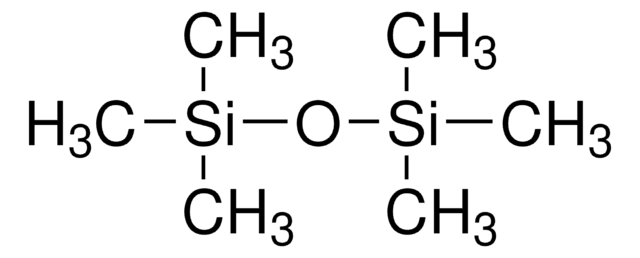Key Documents
DMPS5X
Dimethylpolysiloxane
viscosity 50 cSt (25 °C)(lit.)
Synonim(y):
Polydimethylsiloxane
About This Item
Polecane produkty
Postać
liquid
masa cząsteczkowa
~3,780
lepkość
50 cSt(25 °C)(lit.)
InChI
1S/C2H6OSi/c1-4(2)3/h1-2H3
Klucz InChI
SEUDSDUUJXTXSV-UHFFFAOYSA-N
Szukasz podobnych produktów? Odwiedź Przewodnik dotyczący porównywania produktów
Zastosowanie
- in culturing mouse embryos
- in preparation of oil-based nano-adjuvant candidates
- to reduce the brain movement in the post-cat craniotomy process
Działania biochem./fizjol.
Kod klasy składowania
10 - Combustible liquids
Klasa zagrożenia wodnego (WGK)
WGK 2
Temperatura zapłonu (°F)
609.8 °F - closed cup
Temperatura zapłonu (°C)
321 °C - closed cup
Środki ochrony indywidualnej
Eyeshields, Gloves, multi-purpose combination respirator cartridge (US)
Certyfikaty analizy (CoA)
Poszukaj Certyfikaty analizy (CoA), wpisując numer partii/serii produktów. Numery serii i partii można znaleźć na etykiecie produktu po słowach „seria” lub „partia”.
Masz już ten produkt?
Dokumenty związane z niedawno zakupionymi produktami zostały zamieszczone w Bibliotece dokumentów.
Klienci oglądali również te produkty
Nasz zespół naukowców ma doświadczenie we wszystkich obszarach badań, w tym w naukach przyrodniczych, materiałoznawstwie, syntezie chemicznej, chromatografii, analityce i wielu innych dziedzinach.
Skontaktuj się z zespołem ds. pomocy technicznej






